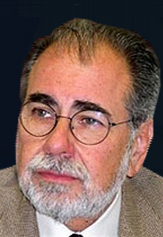Cuba's first presidential election following the introduction of a democratic political system was held on June 12, 2008. President of the Republic of Cuba is the head of state, supreme commander-in-chief and holder of the highest office within the Government of Cuba. Executive power is split between the President and the Prime Minister, who is the head of government.
The election resulted in the election of Rául Castro as the 23rd President of Cuba, who replaced his brother, Fidel Castro, as acting president on February 24, 2008, following Fidel Castro's resignation due to his "critical health condition".
Background[]
Following his appointment as Vice President, many political observers expected Rául to be nominated as Fidel's successor when he died or for some other reason should withdraw from power. On July 31, 2006, Fidel Castro's personal secretary Carlos Valenciaga announced on state-run television that Fidel Castro would provisionally hand over the duties of President of the Council of State of Cuba, First Secretary of the Communist Party and Commander-in-Chief of the Armed Forces to Raúl Castro while Fidel underwent and recovered from intestinal surgery to repair gastrointestinal bleeding.
Many commentators consider Raúl Castro to be a political hardliner who will maintain the Communist Party of Cuba's political power at all costs. However, there are others who believe that he is more pragmatic than his older brother and more willing to institute free market-oriented economic policies, despite Fidel already have given in to much political and economic freedom already by then. While Fidel was favouring a variant of the current Russian political and economic model for Cuba in the hopes of preserving some elements of the socialist system, there were speculations that Raúl would prefer a Chinese model.
On May 1, 2007, Raúl presided over the May Day celebrations in Havana. According to Granma the crowd reached over one million participants, with delegations from over 225 organizations and 52 countries. While Fidel Castro historically mesmerized his countrymen with dramatic, extemporaneous speeches stretching over hours, brother Raúl is known for his businesslike, unanimated delivery, rarely bothering to look up from prepared texts. So Raúl offers, after the resignation of his brother Fidel, announced February 19, 2008, a quieter Castro voice.
On February 24, 2008, the National Assembly transferred the duties of the office of the presidency from Fidel to Raúl, whereafter he delivered a inaugural address. However, his short interim term would prove important in the upcoming presidential elections set for June 12, 2008.
However, throughout the campaign he would emphasize on the importance of his brother, and election posters portrayed the pair side-by-side with the slogan "Together we will win". The poster depicted both politicians in military uniforms with what commentators agreed were "typical for a socialist country".
His main contestant was Marcelino Miyares Sotolongo, the leader of the Christian Democratic Party. He advocated a more withdrawn style of government where the power lay with the Prime Minister, and not between the President and the Prime Minister. He also advocated more democratic and economic reforms, and was endorsed by the Democratic Solidarity Party and the Social Democratic Party of Cuba.
Due to disagreements with the other opposition parties, the Cuban Liberal Union promoted Carlos Alberto Montaner as their own candidate for president. However, on opinion polls he never ranked higher than third, and thus was practically forgotten in the contest between Miyares and Castro.
Сandidates[]
Three candidates registered their nomination with the Central Electoral Commission:
- Raúl Castro, Leader of the Communist Party of Cuba. Registered candidate on January 30.
- Marcelino Miyares Sotolongo - Leader of the Christian Democratic Party of Cuba. Also endorsed by the Democratic Solidarity Party and the Social Democratic Party of Cuba. Registered candidate on February 2.
- Carlos Alberto Montaner - Leader of the Cuban Liberal Union. Registered candidate on February 12.
Results[]
| Cuban presidential election, 2008 | ||||
|---|---|---|---|---|
| Party | Candidate | Votes | Percentage | |
| Communist Party of Cuba | Raúl Castro | 4,899,963 | 63.87% | |
| Christian Democratic Party of Cuba | Marcelino Miyares Sotolongo | 2,572,346 | 33.53% | |
| Cuban Liberal Union | Carlos Alberto Montaner | 199,467 | 2.6% | |
| Valid votes | 7,585,085 | 98.87% | ||
| Blank or invalid votes | 86,891 | 1.13% | ||
| Totals | 7,671,776 | 100.00% | ||
| Voter turnout | 85% | |||
Election monitoring[]
Over 3000 election observers from several independent parties as well as the non-governmental organizations COD (Concert of Democracies) to assess the conduct of the election process on the basis of national legislation and international standards. 200 of the observers were dispatched by the COD, representing the nations of Argentina, Bulgaria, Canada, Colombia, Estonia, Mexico, Norway, Sweden, Slovakia and the Switzerland.
Despite some irregularites, the process of vote counting were unproblematic, and on June 13 the election was called in favor of Rául Castro, receiving 63.87% (4,899,963) of the votes. Marcelino Miyares Sotolongo came in second with 33.53% (2,572,346), while Carlos Alberto Montaner came in third with 2.6% (199,467) of the votes.
See also[]
|
|
|
|


